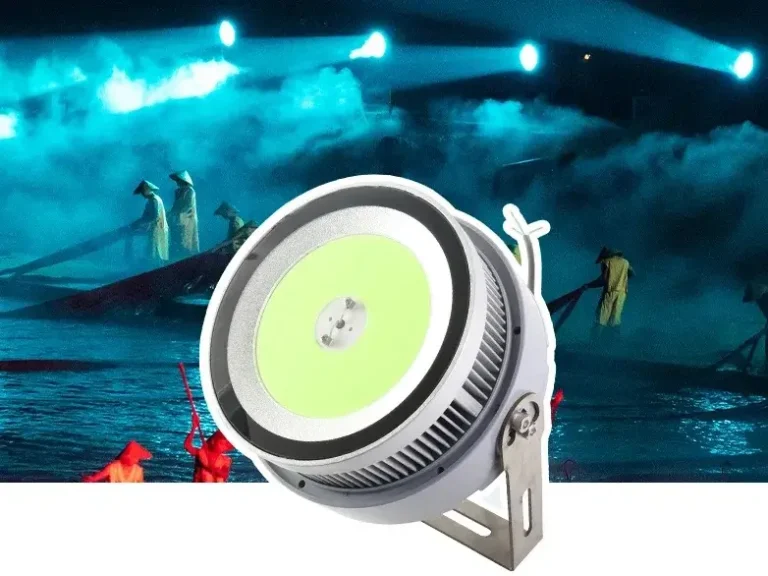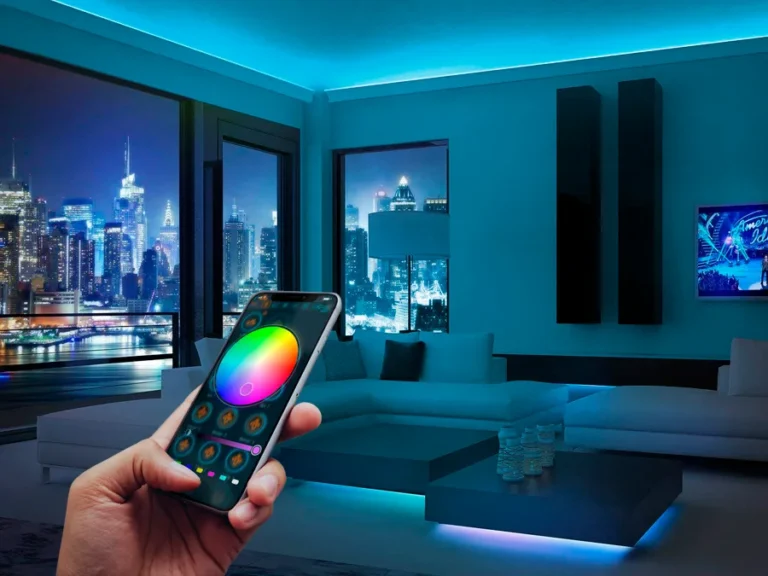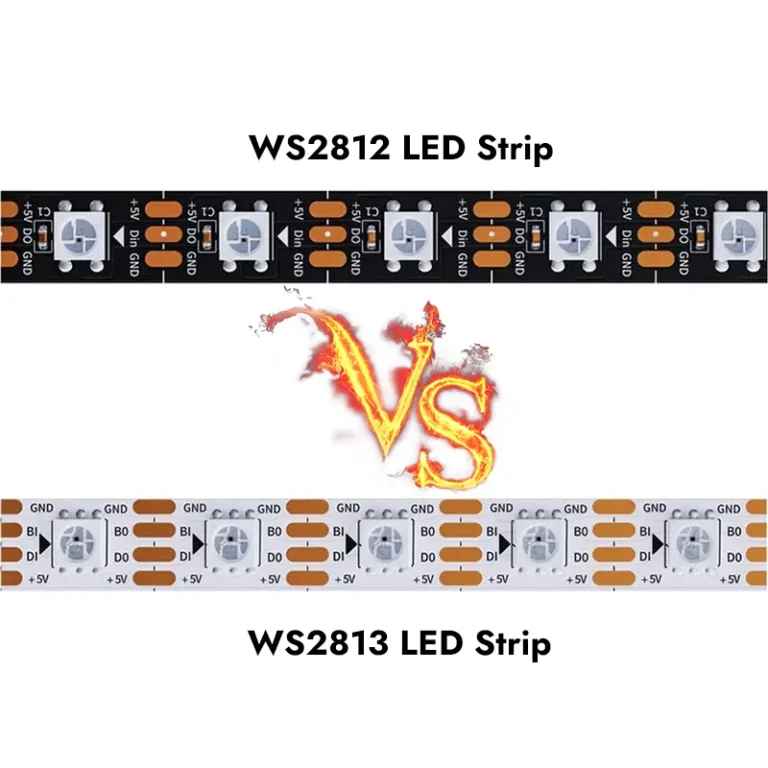ในโลกที่เปลี่ยนอย่างรวดเร็วไปสู่แสงที่ชาญฉลาดและประหยัดพลังงาน ตัวควบคุม LED ได้กลายเป็นองค์ประกอบสำคัญของระบบไฟส่องสว่าง ด้วยตัวควบคุม LED เราสามารถควบคุมพารามิเตอร์แสงแถบ LED ต่างๆ เช่น ความสว่าง สี และอุณหภูมิสี ระบบอัตโนมัติยังสามารถตั้งค่าเพื่อเพิ่มประสิทธิภาพการใช้พลังงาน ความสะดวกสบายของภาพ ความสะดวกสบาย ความปลอดภัย และอื่นๆ การควบคุมไฟ LED มีประโยชน์มากมาย ดังนั้นคำถามสำหรับการจัดการสิ่งอำนวยความสะดวกไม่ใช่ "คุณต้องการคอนโทรลเลอร์ LED หรือไม่" แต่ "คุณควรเลือกตัวควบคุม LED แบบใด . วันนี้เราจะมาพูดถึงเรื่องนั้นกัน
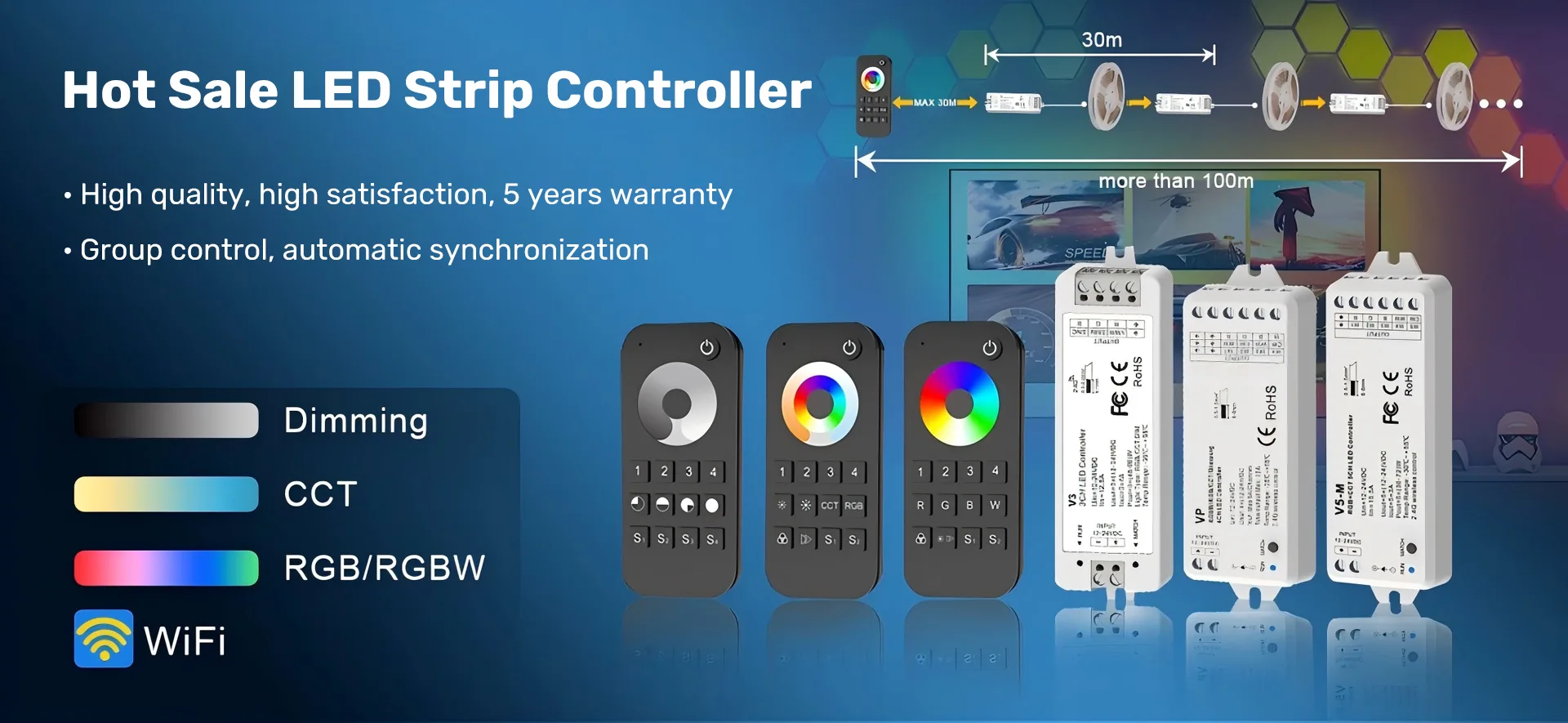
ตัวควบคุม LED คืออะไร?
ตัวควบคุมไฟ LED เป็นอุปกรณ์อิเล็กทรอนิกส์ที่ใช้ควบคุมและขับไฟ LED โดยเฉพาะ ให้การควบคุมกระแสไฟและแรงดันไฟฟ้าที่แม่นยำเพื่อควบคุมความสว่าง สี และผลกระทบของไฟ LED ตัวควบคุม LED ใช้กันอย่างแพร่หลายในด้านแสง จอแสดงผล การตกแต่ง และงานศิลปะ ให้การสนับสนุนที่สำคัญสำหรับการพัฒนาและประยุกต์ใช้เทคโนโลยี LED
ตัวควบคุม LED สามารถให้วิธีการและฟังก์ชันการควบคุมต่างๆ ตามความต้องการของผู้ใช้และสถานการณ์การใช้งาน สามารถควบคุมความสว่างของ LED โดยการปรับกระแสหรือแรงดันเพื่อให้ได้ผลการหรี่แสง ในเวลาเดียวกัน ตัวควบคุม LED ยังสามารถให้โหมดสีและเอฟเฟกต์แบบไดนามิกที่หลากหลายเพื่อให้หลอดไฟ LED มีการเปลี่ยนแปลงที่มีสีสัน ด้วยการใช้ตัวควบคุม LED ผู้ใช้สามารถควบคุมได้อย่างแม่นยำและตั้งค่าไฟ LED ในแบบของคุณ
ประเภทของตัวควบคุม LED
ตัวควบคุมไฟ LED มักจะประกอบด้วยชิปควบคุม วงจรการจัดการพลังงาน และอินเทอร์เฟซการสื่อสาร ชิปควบคุมมีหน้าที่รับสัญญาณอินพุตของผู้ใช้ โดยให้แหล่งจ่ายไฟที่เสถียรแก่หลอดไฟ LED ผ่านวงจรการจัดการพลังงาน และตระหนักถึงการควบคุมความสว่าง สี และโหมดของแถบ LED ตามการใช้งานและต้นทุนของผลิตภัณฑ์ต่างๆ ผู้ใช้สามารถเลือกคอนโทรลเลอร์ของตนเองเพื่อให้ได้สถานการณ์การใช้งานที่ดีขึ้น ตัวควบคุม LED ส่วนใหญ่แบ่งออกเป็นประเภทแบบมีสายและไร้สาย:
ตัวควบคุม LED แบบมีสาย
ตัวควบคุม LED ต้าหลี่
DALI ย่อมาจาก Digital Addressable Lighting Interface เป็นโปรโตคอลการสื่อสาร 2 ทางที่ใช้เพื่อควบคุมและสื่อสารระหว่างส่วนประกอบต่างๆ ในระบบไฟส่องสว่าง ระบบลดแสงของ Dali ใช้เทคโนโลยี Dimming Digital ซึ่งสามารถให้ผลที่ถูกต้องเสถียรและราบรื่น ความสามารถในการป้องกันการรบกวนที่แข็งแกร่ง แม้ว่าค่าใช้จ่ายจะสูง แต่เอฟเฟกต์การหรี่แสงที่แม่นยำและโหมดการควบคุมที่ยืดหยุ่นทำให้ได้เปรียบมากขึ้นในการใช้งานระดับไฮเอนด์
คอนโทรลเลอร์ LED KNX
ระบบ KNX เป็นมาตรฐานการควบคุมที่อยู่อาศัยและอาคารทั่วโลกซึ่งเป็นโปรโตคอลการสื่อสารสำหรับระบบการสร้างอัจฉริยะและระบบอัตโนมัติภายในบ้านเพื่อเชื่อมต่อและควบคุมอุปกรณ์และระบบต่างๆเช่นแสงความร้อนเหมาะสำหรับบ้านอัจฉริยะและระบบอัตโนมัติในการสื่อสารและการควบคุมผ่านระบบรถเมล์
ตัวควบคุม LED DMX
DMX512 เป็นโปรโตคอลการสื่อสารแบบดิจิทัลที่ใช้ควบคุมอุปกรณ์แสงและเอฟเฟกต์ในการใช้งานเพื่อความบันเทิงและการก่อสร้าง ช่วยให้สามารถควบคุมได้ถึง 512 ช่องต่อจักรวาลได้อย่างแม่นยำ ทำให้สามารถควบคุมความเข้ม สี และการเคลื่อนไหวของโคมไฟได้ DMX512 ใช้เพื่อควบคุมพารามิเตอร์ต่างๆ เช่น สีและความสว่างของแถบ LED RGB โดยการควบคุมที่อยู่ของหลอดไฟแต่ละดวง สีและความสว่างของลูกปัดหลอดไฟแต่ละดวงจะเปลี่ยนไปตามลำดับเพื่อให้ได้เอฟเฟกต์แสงที่เปลี่ยนแปลงไปที่หลากหลาย คอนโทรลเลอร์สามารถควบคุมผ่านโทรศัพท์มือถือหรือคอมพิวเตอร์ที่เชื่อมต่อโดยตรงกับพีซีหรือแอป
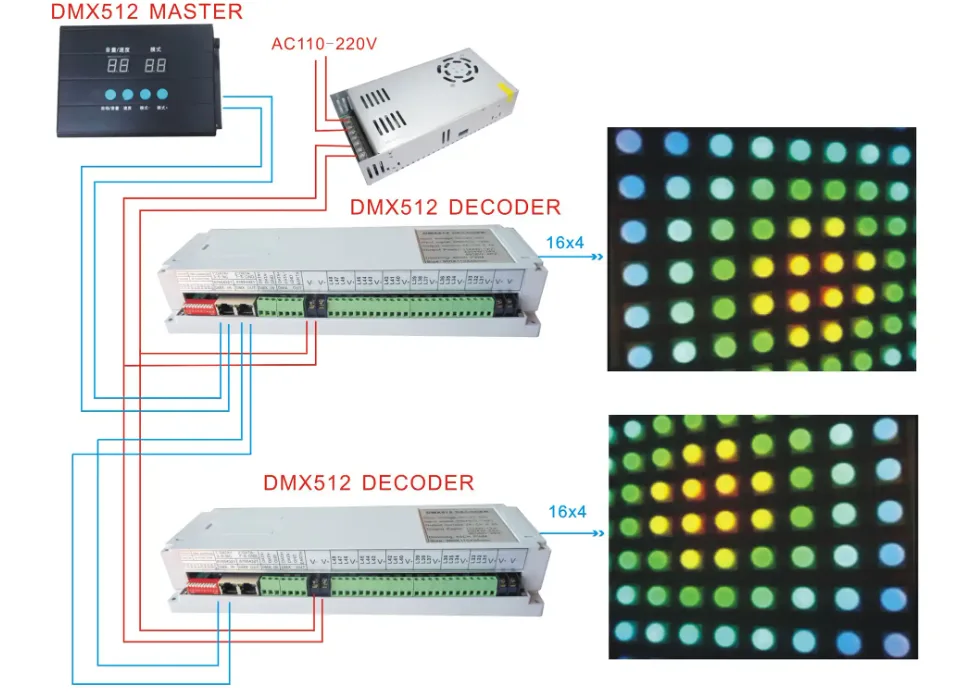
ตัวควบคุมเครื่องหรี่ Triac
Triac Dimming เป็นอุปกรณ์ที่ใช้ในการปรับความสว่างของแสงโดยการควบคุมมุมการนำ Triac เพื่อเปลี่ยนขนาดของกระแสเพื่อให้บรรลุผลแสงของแสง Triac ไม่แม่นยำเพียงพอ แต่การเดินสายไฟนั้นเรียบง่ายและต้นทุนต่ำ
0-10V ตัวควบคุมหรี่ไฟ
หลักการทำงานของเครื่องหรี่ไฟ 0-10V คือการควบคุมความสว่างของหลอดไฟโดยการจำลองสัญญาณแรงดันไฟฟ้า โดยเฉพาะอย่างยิ่ง สัญญาณแรงดันขาออกโดยหรี่ไฟจะแตกต่างกันไประหว่าง 0 ถึง 10V ซึ่งจะช่วยควบคุมขนาดของกระแสไฟที่จ่าย ซึ่งจะปรับความสว่างของแสง เมื่อแรงดันไฟฟ้าเป็น 0V กระแสจะลดลงเหลือ 0 และไฟดับ เมื่อแรงดันไฟฟ้าอยู่ที่ 10V กระแสจะถึงค่าสูงสุดและแสงจะสว่างที่สุด。ข้อดีของการหรี่แสง 0-10V คือการหรี่แสงที่แม่นยำ ความเข้ากันได้ที่แข็งแกร่ง และการบำรุงรักษาอย่างง่าย ข้อเสียคือต้องกำหนดค่าสายสัญญาณสองสาย (0V และ 10V) เพิ่มความซับซ้อนและต้นทุนในการติดตั้งไม่เหมาะสำหรับการส่งทางไกล
ตัวควบคุม LED ไร้สาย
ตัวควบคุม LED IR
ข้อดีของรีโมทอินฟราเรดมีราคาถูกและประหยัด ใช้งานง่าย ไม่รบกวนการทำงานของอุปกรณ์ไฟฟ้าอื่น ๆ และจะไม่ส่งผลกระทบต่อสภาพแวดล้อมโดยรอบ ข้อเสียคือเป็นทิศทางรีโมทคอนโทรลและแผนกต้อนรับต้องอยู่ในแนวราบและระยะการทำงานโดยทั่วไป 3-8 เมตร
ตัวควบคุมบลูทู ธ
รีโมท LED บลูทูธ ผ่านเทคโนโลยีบลูทูธและการเชื่อมต่ออุปกรณ์ การควบคุมไร้สาย ผู้ใช้สามารถทุกที่ทุกเวลาผ่านโทรศัพท์มือถือหรืออุปกรณ์อัจฉริยะอื่น ๆ เพื่อควบคุมแสงไม่มีสวิตช์สัมผัสทางกายภาพกับทั่วไปเมื่อเทียบกับรีโมทอินฟราเรด Bluetooth Smart รีโมทควบคุมได้มากกว่า โดยทั่วไปสามารถทำได้ 360 องศาโดยไม่ต้องใช้รีโมทแบบมุมตาย และเดินทางไกล ข้อเสียคืออุปกรณ์ของผู้ใช้จำเป็นต้องมีความสามารถบลูทูธ
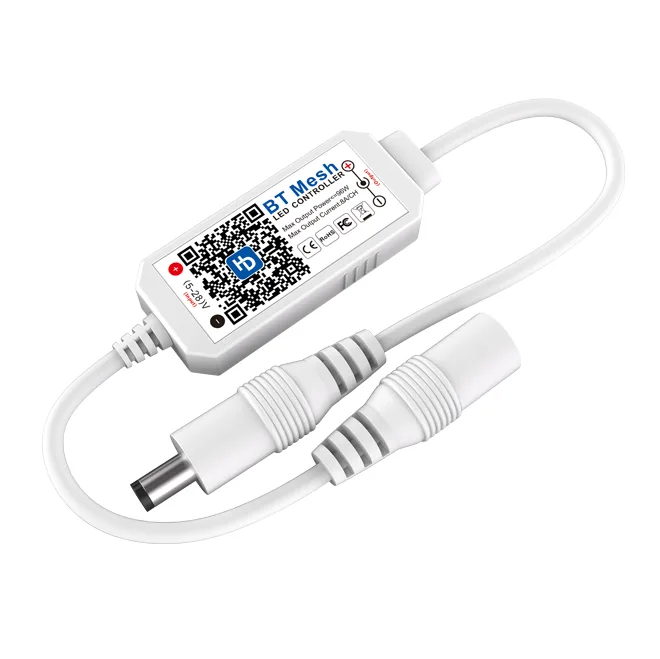
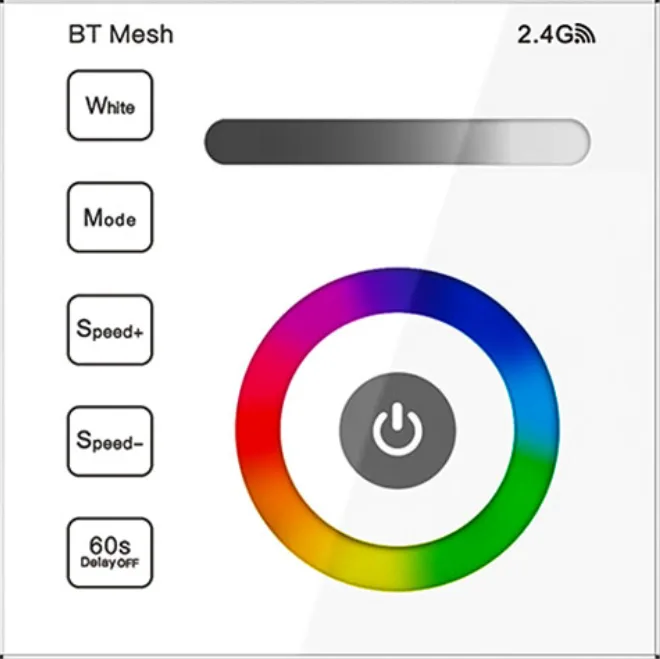
ตัวควบคุม LED ไร้สาย RF
รีโมทคอนโทรล RF ใช้เทคโนโลยีความถี่วิทยุเพื่อส่งสัญญาณวิทยุเพื่อให้เกิดการควบคุมระยะไกล ตัวควบคุม RF มีลักษณะของการทำงานที่เรียบง่าย ใช้พลังงานต่ำ และความปลอดภัยสูง ไม่มีทิศทาง รีโมทคอนโทรลสะดวกกว่า
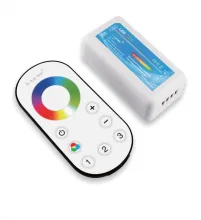
ตัวควบคุม LED ไร้สาย
WiFi ไม่จำเป็นต้องเดินสายไฟ ไม่สามารถจำกัดได้เพียงข้อจำกัดของสายเคเบิล ในหลาย ๆ สถานการณ์ที่สะดวกกว่า ความเร็วในการส่งผ่าน WiFi นั้นรวดเร็วมากซึ่งสามารถตอบสนองความต้องการของการใช้งานแบนด์วิดท์สูงได้ ข้อเสียคือความครอบคลุมของ WiFi มักจะ จำกัด และสัญญาณอาจอ่อนลงหากระยะทางไกลขึ้น ความเสถียรของเครือข่าย WiFi อาจได้รับผลกระทบจากปัจจัยต่างๆ เช่น การรบกวนสัญญาณ อุปกรณ์ล้มเหลว ฯลฯ
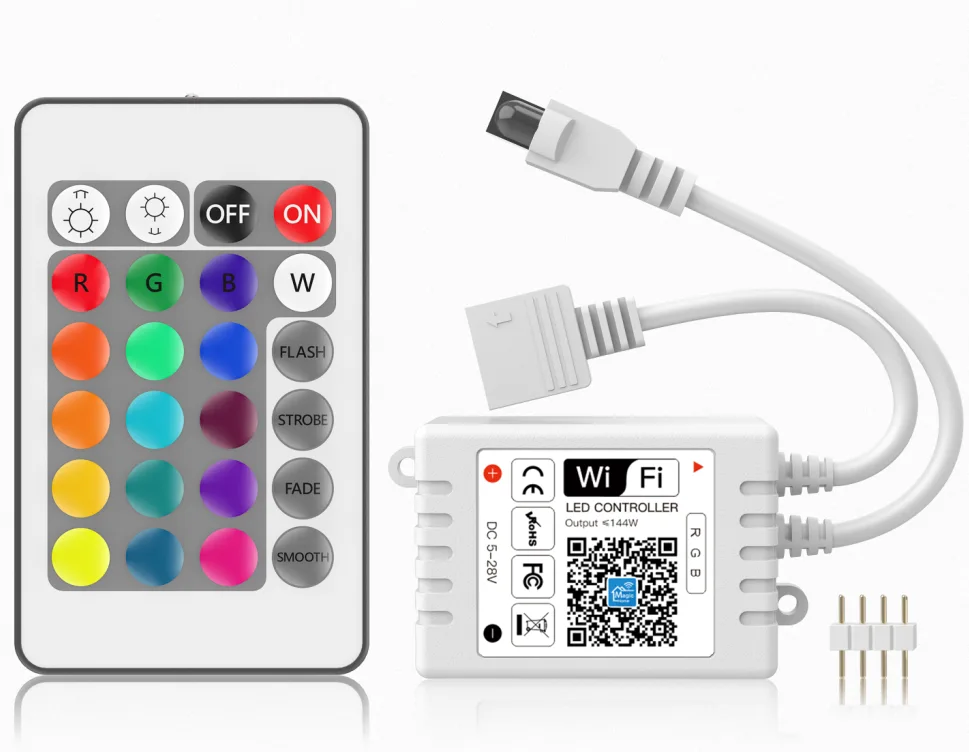
ตัวควบคุม LED ซิกบี
Zigbee เป็นเทคโนโลยีการสื่อสารไร้สายสองทางที่ได้รับการยอมรับในระดับสากลซึ่งแต่ละพอร์ตเครือข่ายสามารถเข้าถึงพอร์ตมากกว่า 65,000 พอร์ตซึ่งส่วนใหญ่ใช้สำหรับระยะทางสั้น ๆ ใช้พลังงานต่ำและอัตราการส่งไม่สูงระหว่างอุปกรณ์อิเล็กทรอนิกส์ต่างๆสำหรับการส่งข้อมูลอัตราต่ำการใช้พลังงานต่ำต้นทุนต่ำเหมาะสำหรับโครงการขนาดใหญ่ zigbee มักใช้สำหรับผลิตภัณฑ์แสงกลางแจ้งในขณะที่ WiFi มุ่งเน้นไปที่การควบคุมแสงอัจฉริยะในร่ม

อะไรคือความแตกต่างระหว่างตัวควบคุม LED แบบมีสายและตัวควบคุม LED ไร้สาย?
I. ตัวควบคุม LED แบบมีสาย
ตัวควบคุม LED แบบมีสายและไร้สายมีประโยชน์สำหรับการควบคุมระบบไฟ LED ตัวควบคุมแบบมีสายเป็นระบบแบบมีสายแบบมีสายซึ่งต้องการการเชื่อมต่อทางกายภาพระหว่างตัวควบคุมและไฟ LED
ด้วยตัวควบคุม LED แบบมีสาย ผู้ใช้สามารถควบคุมความเข้ม สี และคุณสมบัติอื่นๆ ของแสงจากคอนโทรลเลอร์ที่กำหนดได้ ระบบแบบมีสายมีความน่าเชื่อถือและใช้งานง่าย แต่อาจมีราคาแพงและติดตั้งยาก
ข้อดี:
- การส่งสัญญาณที่มั่นคง: การส่งสัญญาณของตัวควบคุมแบบมีสายไม่ได้รับผลกระทบจากสภาพแวดล้อมภายนอกและสามารถให้สัญญาณที่เสถียร
- ไม่ต้องใช้แบตเตอรี่: ตัวควบคุมแบบมีสายไม่ต้องใช้แบตเตอรี่ดังนั้นจึงไม่มีปัญหากับอายุการใช้งานแบตเตอรี่
- ความสามารถในการป้องกันการรบกวนที่แข็งแกร่ง: การส่งสัญญาณของตัวควบคุมแบบมีสายจะไม่ได้รับผลกระทบจากการรบกวนทางแม่เหล็กไฟฟ้า
ข้อเสีย:
- ค่าใช้จ่ายในการติดตั้งและบำรุงรักษาสูง: ตัวควบคุมแบบมีสายต้องการงานเดินสายไฟแบบพิเศษและต้องมีการบำรุงรักษาและการตรวจสอบเป็นประจำ
- ช่วงการทำงานที่จำกัด: เนื่องจากตัวควบคุมแบบมีสายต้องการการเดินสายแบบตายตัว ช่วงการทำงานจึงมักถูกจำกัด
II. ตัวควบคุม LED ไร้สาย
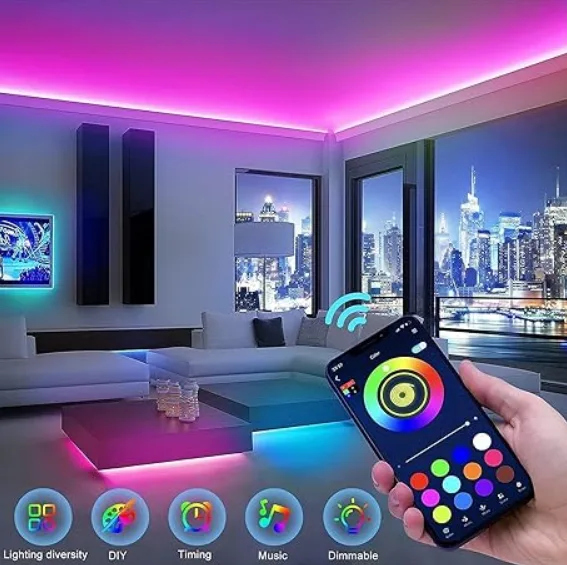
ตัวควบคุมไร้สายส่งสัญญาณผ่านสัญญาณวิทยุ และผู้ปฏิบัติงานสามารถทำงานได้ในระยะทางที่กำหนด
ข้อดี:
- ขยายช่วงการทำงาน: ตัวควบคุมไร้สายสามารถทำงานได้ภายในช่วงที่กำหนดและไม่ จำกัด โดยการเดินสาย
- ขั้นตอนการติดตั้งให้ง่ายขึ้น: การติดตั้งตัวควบคุมไร้สายนั้นง่ายกว่าการติดตั้งรีโมทแบบมีสายและจำเป็นต้องจัดตำแหน่งหรือจับคู่เครื่องส่งและตัวรับสัญญาณเท่านั้น
- เคลื่อนย้ายง่าย: เนื่องจากผู้ควบคุมไร้สายสามารถทำงานได้จากระยะไกล การควบคุมจึงค่อนข้างยืดหยุ่น และเป็นที่หลักที่สามารถควบคุมเครือข่ายได้
ข้อเสีย:
- สัญญาณรบกวนที่เป็นไปได้: สัญญาณของคอนโทรลเลอร์ไร้สายอาจถูกรบกวนโดยอุปกรณ์ไร้สายอื่น ๆ ส่งผลให้สัญญาณไม่เสถียร
- ต้องใช้แบตเตอรี่: รีโมทไร้สายต้องใช้พลังงานแบตเตอรี่ดังนั้นจึงมีปัญหาเรื่องอายุการใช้งานแบตเตอรี่
– อาจส่งผลต่อคุณภาพสัญญาณ: เมื่อระยะทางเพิ่มขึ้น สัญญาณไร้สายอาจลดลง ซึ่งส่งผลต่อคุณภาพของสัญญาณ
โดยทั่วไปการเลือกรีโมทคอนโทรลแบบมีสายหรือไร้สายขึ้นอยู่กับความต้องการของการใช้งานเฉพาะ สำหรับการใช้งานที่ต้องการการส่งสัญญาณที่แม่นยำและเสถียร รีโมทแบบมีสายอาจเป็นทางเลือกที่ดีกว่า สำหรับการใช้งานที่ต้องการช่วงการทำงานที่ขยายออกไปหรือการเคลื่อนไหวที่สะดวก รีโมทคอนโทรลแบบไร้สายอาจเหมาะสมกว่า ตัวควบคุมแบบมีสายมักจะต้องใช้สายไฟและเหมาะสำหรับสถานที่ติดตั้งแบบตายตัว เช่น ไฟส่องสว่างในเชิงพาณิชย์ ไฟส่องสว่างบนเวที ฯลฯ ตัวควบคุมไร้สายเหมาะสำหรับสถานการณ์ที่ต้องการการเดินสายที่ยืดหยุ่น เช่น บ้านอัจฉริยะและอุปกรณ์พกพา โดยทั่วไปแล้ว ตัวควบคุมไร้สายได้รับการออกแบบมาสำหรับการใช้พลังงานต่ำและเหมาะสำหรับการใช้งานเป็นเวลานานโดยไม่จำเป็นต้องเปลี่ยนแบตเตอรี่บ่อยๆ
ปัจจัยสำคัญที่ควรพิจารณาเมื่อเลือกตัวควบคุม LED
1. ความเข้ากันได้ของแรงดันไฟฟ้า
ในการเลือกตัวควบคุมที่เหมาะสมตามแรงดันการทำงานของสายพานหลอดไฟจะต้องใช้แรงดันขาออกของตัวควบคุมและแรงดันไฟฟ้าของสายพานหลอด นอกจากนี้ ควรสังเกตว่าแรงดันไฟอินพุตของคอนโทรลเลอร์ควรเป็นไปตามข้อกำหนดของแรงดันไฟฟ้าในพื้นที่ด้วย
2. กำลังวัตต์
เมื่อเลือกแหล่งจ่ายไฟที่เหมาะสม คุณจะต้องรู้สี่สิ่งนี้:
节能环保
-项目所需LED灯带的长度
-灯带工作电压
-是否需要电源具备调光功能
通用原则:电源额定功率至少需比LED灯带总功率高20%。若电源超负荷运行,将导致灯带过热或损坏。
3. 控制方式
灯带控制方式多样,可根据需求选择:开关控制、亮度调节、色彩控制、智能控制、DMX512控制等。结合产品应用场景与成本,终端用户可选择合适的控制器以满足需求。
4. 与LED灯带类型的兼容性
选购控制器时需确保其与LED灯带类型匹配,以保证正常工作。
5. 成本与应用考量
建议选择知名品牌LED控制器,虽价格较高但质量可靠、售后完善;有线或无线遥控的选择取决于具体需求。例如普通RGB调色使用基础无线控制器即可,若需精密调光与色彩控制,则应选用高成本的DMX512有线控制器。
บทสรุป
LED控制器 是专用于控制和驱动LED灯具的电子设备,具有精准调控、多控制模式、多色彩方案选择及节能环保等特点。在照明、显示、装饰与艺术领域发挥着重要作用,为LED技术的应用发展提供核心支持。通过灯光控制、色彩管理、动态效果及系统集成等功能,赋予LED灯具更强的表现力与创意空间。搭配合适的控制器可实现更丰富的灯光效果,为家居装饰与商业场所增色。根据需求选择适配的LED灯带控制器,能为生活增添更多乐趣与便利。如需定制生产,请联系 SIGNLITELED。我们拥有十余年LED照明制造经验,可提供专业解决方案与建议。
